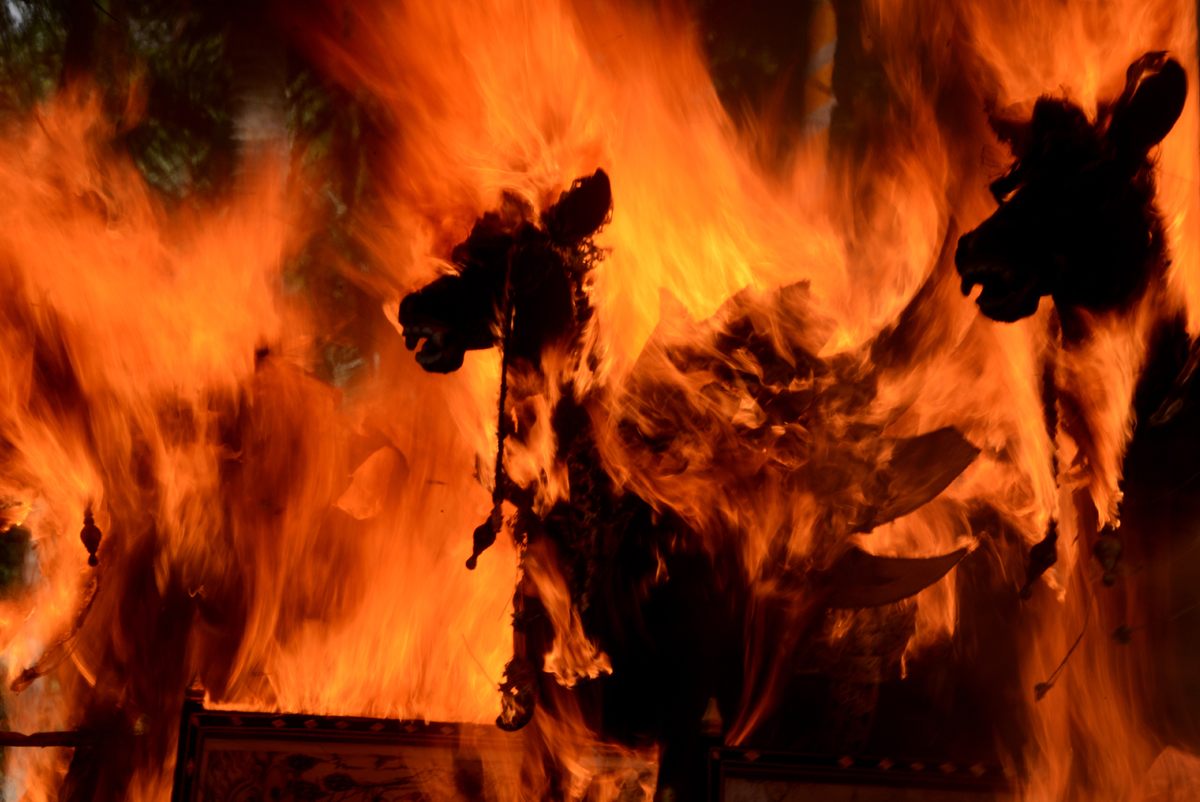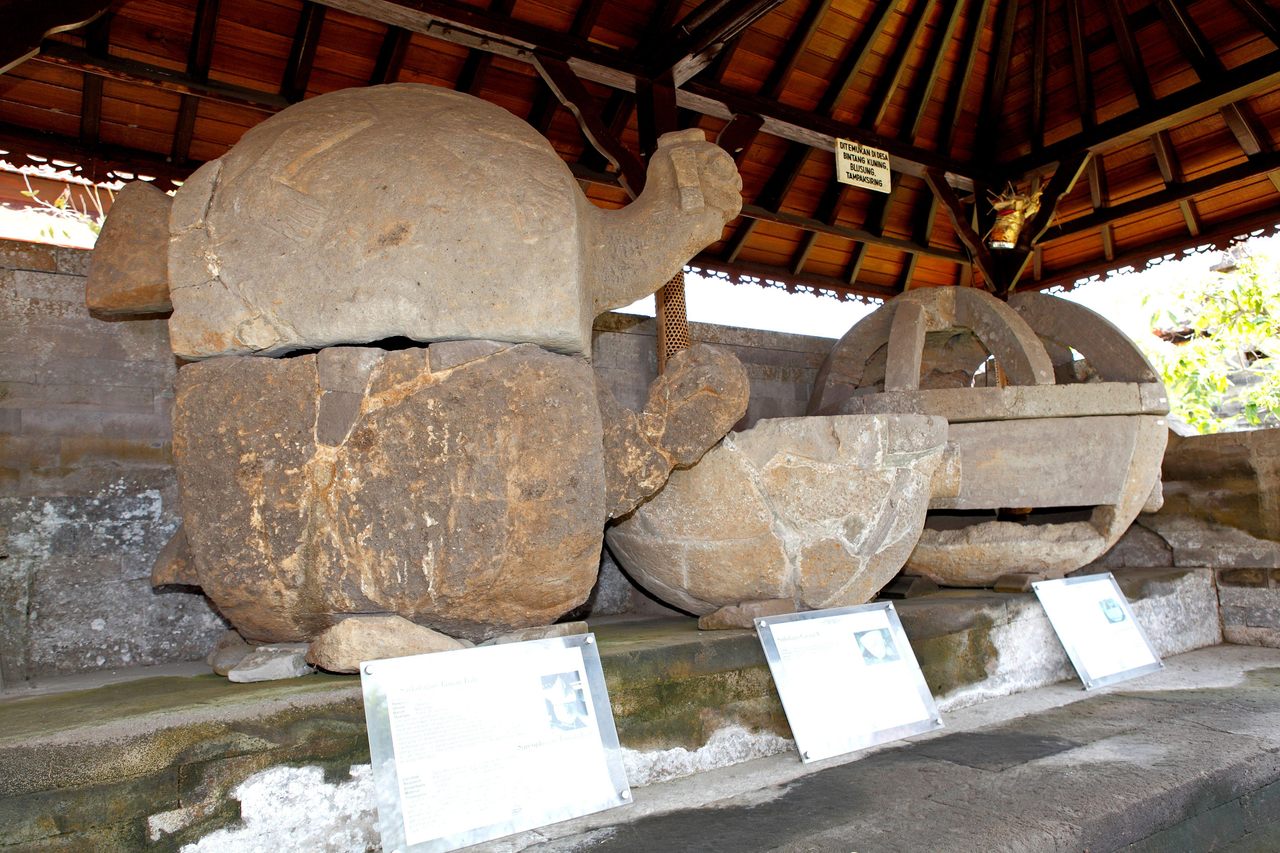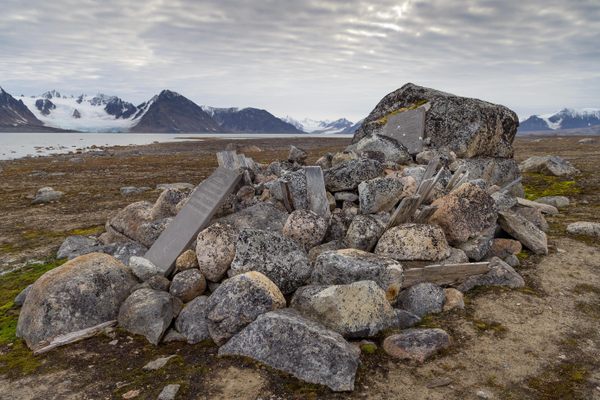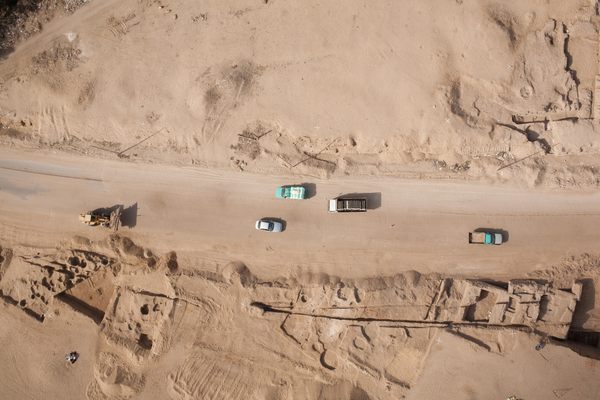Bali’s Massive Stone Sarcophagi Included Global Grave Goods
Mirrors from China, glass beads from Roman Egypt, and other treasures from far-flung places accompanied ancient Balinese elites to the afterworld.

The district of Pangkung Paruk lies on the northern coast of Bali where verdant green jungle meets azure sea. It is off the beaten track, removed from tourist hotspots on the south coast around the city of Denpasar. In 2009, a local rice farmer digging an irrigation trench stumbled upon a massive stone sarcophagus that had been buried for nearly 2,000 years. Experts from the Bali Institute of Archaeology were summoned and, over the next two years, working with the landowner they found and excavated three similar sarcophagi at the site, some of them still containing the skeletons of their owners—as well as surprising items that hinted at the global reach of the culture that fashioned them.
The style of large, oval sarcophagi was already well known to archaeologists working on Pulau Dewata, the “Island of the Gods” as Bali is known locally. In fact, more than 200 such sarcophagi have been recovered by archaeologists around the island over the last century—the first, standing in the temple of Pura Penataran, was initially misidentified as a pig feeding trough by Dutch scholar Pieter de Kat Angelino. The earliest of the found sarcophagi are more than 2,600 years old, but production reached a zenith during the Balinese Bronze Age, from the seventh to early ninth century.
The Balinese burial containers were carved from tuff, a stone formed from compressed volcanic ash. The rock is common on the island, which is riddled with tunnels from ancient quarry operations to carve out stone blocks destined for statues, pillars, bas-relief, and sarcophagi. The Bali sarcophagi are characterized by their oval shape, and by distinctive knobs on the ends that are often carved into animal or anthropomorphic shapes.

One of the most impressive of these megalithic artifacts, currently housed in the Museum Gedong Arca, was carved to resemble an old turtle. Its curved neck may have served as an anchor point for a rope used to move the heavy sarcophagus by pulling it on a sledge supported by rollers. Creating these majestic containers—some of which are more than 8 feet in length—with hard stone pounders, bronze chisels, and handfuls of sand for smoothing would have represented an enormous investment of time, skills, and resources. They would have been used only for the burials of the island’s most elite members, including chieftains and priests.
The skeletons inside the sarcophagi were placed either on their back or, more commonly, in a flexed position on the side. And the elaborately carved sarcophagi were not the only gifts these ancient Balinese nobles took with them to the grave: Bronze artifacts such as model hoes, shovels, and other tools, as well as buckets and bronze kettle drums, have all been found with the dead. Jewelry in the form of arm- and finger-rings cast in gold were also sometimes included.
What was particularly striking about the 2009 discovery in Pangkung Paruk, however, was the geographical range of the burial goods interred with the deceased rulers. Scientific analysis revealed that 43 glass beads found in one of the sarcophagi were manufactured in Roman Egypt between the second and fourth centuries. These beads were most likely cast in one of the important urban centers, such as Alexandria, Memphis, or Koptos, and then carried overland nearly 300 miles through the blistering desert heat of Wadi Hammamat to the port of Berenike. From there, they made their way across the Red Sea and then, likely traded from merchant to merchant, the Arabian Peninsula and Persian Gulf to India. There they would have entered the vast and complex trans-Asiatic trade network from the Bay of Bengal to Vietnam, eventually arriving on Bali. The craftspeople who fashioned these beads in Egypt could never have known that their prized work would travel more than 10,000 kilometers (more than 6,000 miles) across deserts, deltas, and ocean.
The dead of Pangkung Paruk were also buried with elaborate gold ear pendants cast in spiral shapes. These were most likely manufactured in Thailand or Cambodia, also traveling thousands of miles. Uniquely for any prehistoric burials on the islands of Southeast Asia, the burials at Pangkung Paruk also contained bronze mirrors that were manufactured during the Han Dynasty in China.

While the two Chinese mirrors are unique to Pangkung Paruk, Roman glass beads and bronze jewelry have been found in other Balinese graves from the period. But the Pangkung Paruk finds comprise the largest hoard of cosmopolitan grave goods ever found at a single site on the island. This may suggest that Pangkung Paruk was a uniquely powerful polity—or simply that the site remained hidden from looters, who stole from and damaged many other Balinese sarcophagi burials.
As the Balinese bronze age ended, several centuries after the burials at Pangkung Paruk, regional rule on the island was replaced by a single monarch. This shift, along with the spread of localized forms of Hinduism and Buddhism, led to a change in burial customs.
The tuff sarcophagi of the Balinese Neolithic and Bronze Ages were no longer produced, and cremation eventually became the dominant funerary tradition. To this day, however, Balinese cremation ceremonies often include patulangan—ornate wooden sarcophagi that are shaped like animals—an echo of the ancient vessels of volcanic rock that once held the dead and treasures from distant lands.





























Follow us on Twitter to get the latest on the world's hidden wonders.
Like us on Facebook to get the latest on the world's hidden wonders.
Follow us on Twitter Like us on Facebook